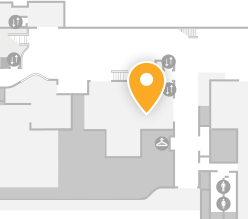
Dragonfly Lamp (Primary Title)
attributed to, Clara Driscoll, American, 1861 - 1944 (Designer)
Tiffany Studios, American, New York, 1902 - 1932 (Studio)
After starting work for tiffany in 1888, Clara Driscoll became head of the Women’s Glass Cutting Department in 1892 and designed the majority of Tiffany’s lamps. Her design for the dragonfly shade was among Tiffany’s most popular lamps. An article in The New York Daily News (April 1904) profiled Driscoll as one of a group of American women who earned $10,000 or more annually. Although Louis Comfort Tiffany kept all the names of his workers anonymous, that article identifies Driscoll as the designer of one of the most iconic lamps for Tiffany Studios. A variant of VMFA’s dragonfly shade was first publicly shown in French art dealer Siegfried Bing’s exhibition L’Art Nouveau at the Grafton Galleries in London in 1899. A year later, another version of Driscoll’s dragonfly lamp shade won a prize at the World’s Fair in Paris. A third example of Driscoll’s dragonfly lamp shade was on display at the Exhibition of Modern Decorative Arts in Turin, Italy, in 1902.
Shade unmarked.
Base marked: Tiffany Studios/New York/397.
Gift of Sydney and Frances Lewis
(similar example), World's Fair, Paris, 1900; International Exhibition of Modern Decorative Arts, Turin, Italy, 1902'
"Art Nouveau-France/Belgium," Rice University, Mar 25 - June 27, 1976 and Art Institute of Chicago, Aug 28 - Nov 7, 1976;"
"The Lost Paradise: Symbolist Europe," Montreal Musem of Fine Arts, June 6 - Oct 15,1995; Guggenheim Museum, NY, Nov 16, 1995 - Feb 25, 1996;
"Art Nouveau-France/Belgium," Rice University, Mar 25 - June 27, 1976 and Art Institute of Chicago, Aug 28 - Nov 7, 1976;"
"The Lost Paradise: Symbolist Europe," Montreal Musem of Fine Arts, June 6 - Oct 15,1995; Guggenheim Museum, NY, Nov 16, 1995 - Feb 25, 1996;
Image released via Creative Commons CC-BY-NC
Some object records are not complete and do not reflect VMFA's full and current knowledge. VMFA makes routine updates as records are reviewed and enhanced.

